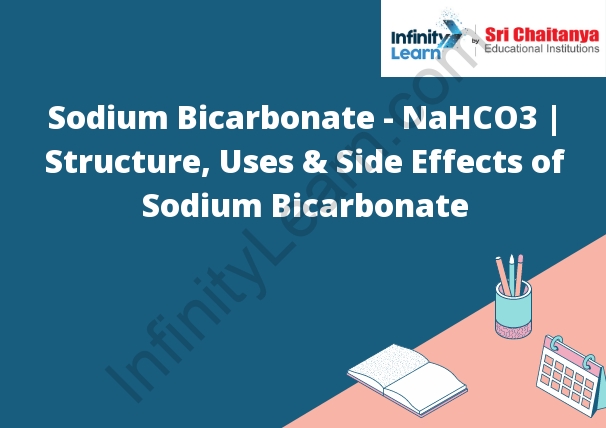Table of Contents
Sodium Bicarbonate – NaHCO3
Introduction to Sodium Bicarbonate – NaHCO3:
- Sodium bicarbonate is a white crystalline powder that is mostly used as a raising agent in baking. It is also called baking soda. When it is mixed with an acidic ingredient such as buttermilk, lemon juice, or vinegar, it reacts to release carbon dioxide gas. The gas bubbles cause the mixture to rise and thicken, resulting in a light and fluffy cake or bread.
- Sodium bicarbonate is also used as a leavening agent in other types of food such as pizza dough, pretzels, and bagels. It is also used as a cleaning agent and as a deodorizer. For example, it can be used to remove odors from refrigerators, carpets, and upholstery.

What is Sodium Bicarbonate?
Sodium bicarbonate is a white crystalline powder that is used as a leavening agent in food. It is also known as baking soda. When it is mixed with an acid, such as vinegar, it reacts to produce carbon dioxide gas, which causes dough to rise.
Production of Sodium Bicarbonate
The production of sodium bicarbonate s a two-step process.
- In the first step, carbon dioxide gas is produced. In the second step, the carbon dioxide gas is reacted with sodium hydroxide to produce sodium bicarbonate.
- The carbon dioxide gas is produced by the burning of coal or natural gas. The coal or natural gas is burned in a furnace to produce heat. The heat is used to produce a chemical reaction that causes the carbon dioxide gas to be produced.
- The carbon dioxide gas is then sent to a reactor. The reactor is a large steel container. The carbon dioxide gas is mixed with sodium hydroxide. The sodium hydroxide is a liquid.
- The mixture of carbon dioxide gas and sodium hydroxide is then heated. This causes a chemical reaction to take place. The reaction produces sodium bicarbonate and water.
- The sodium bicarbonate is then collected and cooled. It is then packaged and shipped to companies that use it in their products.
Properties of Sodium Bicarbonate
Sodium bicarbonate is a white, crystalline, alkaline powder that is soluble in water. It is used as a baking soda in food preparation, as a leavening agent in baking, and as a pH buffer in a variety of industrial processes. Sodium bicarbonate is also used as an antacid to neutralize stomach acids.
Structure of Sodium Bicarbonate
Sodium bicarbonate is a salt composed of a sodium cation and a bicarbonate anion. It is a white solid that is soluble in water.
Uses of Sodium Bicarbonate
Sodium bicarbonate is used for a variety of purposes, both in the home and in the industrial setting. In the home, it is often used as a cleaning agent, because it is a powerful alkali that can neutralize acids. It can also be used as a deodorizer, because its alkaline nature helps to neutralize unpleasant smells. In the industrial setting, sodium bicarbonate is used as a leavening agent in baking, because it helps to produce carbon dioxide gas and make baked goods rise. It can also be used as a buffering agent to control the pH of solutions.
Differences Between Baking Soda and Baking Powder
Baking soda and baking powder are both leavening agents, but they work differently. Baking soda is a base and it reacts with an acid to release carbon dioxide gas. Baking powder is a combination of baking soda and an acid, so it already contains the carbon dioxide gas. This means that you don’t need to add an acid to the recipe when you use baking powder.
Health Hazard
- Sodium bicarbonate, also known as baking soda, is a white, crystalline powder that is widely used as a leavening agent in baking. It is also used to make cleaning solutions and as a deodorizer. Sodium bicarbonate is non-toxic and generally considered safe when used as directed. However, there are some potential health hazards associated with its use.
- Sodium bicarbonate can cause skin irritation and eye irritation. It can also cause respiratory irritation if inhaled. Ingesting large amounts of sodium bicarbonate can cause nausea, vomiting, and diarrhea. It can also cause electrolyte imbalance and alkalosis. Alkalosis is a condition in which the body’s pH balance is shifted too far to the alkaline side, which can be dangerous.
For more visit Sodium Bicarbonate – NaHCO3 | Structure, Uses & Side Effects of Sodium Bicarbonate





